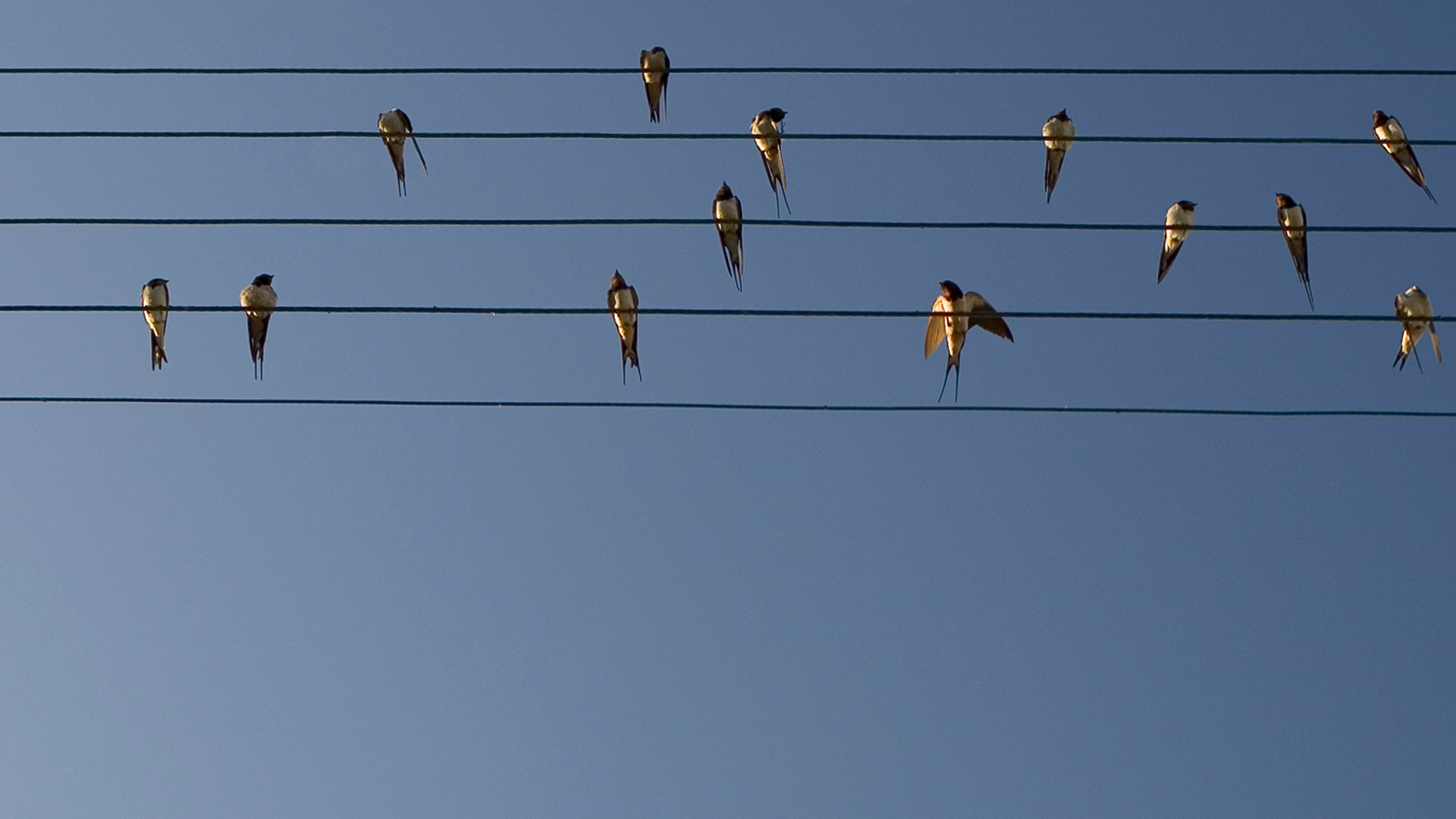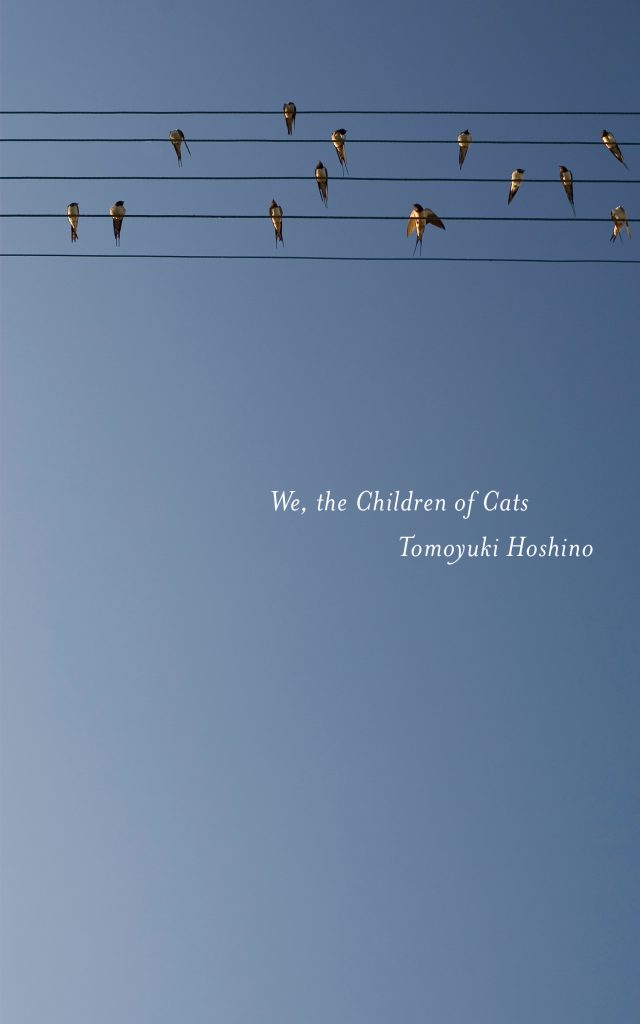Nihon Distractions: Readings in Translated Japanese Literature
July 14, 2012
We, the Children of Cats collects together five short stories and three novellas from Tomoyuki Hoshino, 星野 智幸, translated by Brian Bergstrom with one of the stories being translated by Lucy Fraser and is published by PM Press. Hoshino was awarded the Oe Kenzaburo Prize in 2011 for Ore Ore/It’s Me It’s Me, it would be great to a see a translation of this novel into English in the near future, it looks like a translation of Hoshino’s first novel by Brent Lue could be in the pipeline. Oe has said of Hoshino, “I see [in Hoshino] an ability to truly think through fiction that recalls Kobo Abe. This superlative ability makes even the most fantastical details and developments read as perfectly natural,” PM Press also published another novel from Hoshino, The Lonely Hearts Killer/Ronrii haatsu kiraa, translated by Adrienne Hurley. Hoshino has also won the Noma Prize and has been nominated for the Akutagwa Prize twice, once for the novella Sand Planet—which is included here, a story Hoshino was inspired to write after watching the documentary Homesick in my Dreams by filmmaker Jun Okamura, the collection is also accompanied by a preface by Hoshino and an expansive and thorough afterword from Brian Bergstrom. Hoshino’s shorter fictions are at times composed of highly compressed inverse narratives, metaphors often turn inside out, reading them the reader has to usually keep an alert eye out on what is taking place in the allegorical. The pieces here give a wide and varied impression of Hoshino’s concerns, appearance and identity become porous, equational thinking is rethought and reproduces answers that challenge straight forward and preconceived notional thinking. In the opening story “Paper Woman,” reality and an imagined world converge, the inital narrator, (also named Hoshino), meets an author of a story about a woman who could only eat paper, eventually she herself turns to paper, the projected narrative supercedes over the opening one, the relationship progresses eventually spawning a son—Kazuyoshi. The story is a complex and highly allegorical one about the relationship between literature and the author.
In “The No Fathers Club,” which originally appeared in the recent anthology Digital Geishas and Talking Frogs, an imaginary world is initiated after the narrator watches a game of no ball soccer, a game played with an imagined ball, the description of this game seems to briefly capture in microcosm the spontaneously absurd animation of the modern world, this soccer game leads however to the The No Fathers Club, a club whose members fathers have died prematurely, the club is formed by the narrator and friend Yosuke and then later Kurumi, with whom the narrator seems to form an attachment too, Yosuke eventually leaves the club by stating that his (imagined) father committed suicide. Kurumi and the narrator organise a meeting with their respective fathers. Chino, translated by Lucy Fraser is narrated by a young man who gives up his part time jobs and travels to “a small country below Mexico” intending to join a group of guerrillas, examples of Hoshino’s fascination of South America appear throughout many of these stories. The narrator seems to disassociate himself from his fellow Japanese, rich kids travelling on the cheap, pretending at roughing it out. When reaching the village where he’s expecting to make contact with the guerrillas he meets a young Japanese woman who has beaten him to it and appears to have assimilated herself into the country, she only acknowledges him in Spanish, the narrator learns of her history and of how it has come about that she has remained in the village, in repeated episodes throughout the story the narrator is mistakenly identified as being a Chino, (Chinese), which provokes explorative questions on the nature of national identities, the story at times and places brought to mind the fiction of Ikezawa Natsuki. “We, the Children of Cats,” follows Masako and Naru a young couple as they come under pressure from their family to have a baby, the history and nature of their relationship is partially explained through a series of passages relating a phone conversation they have, their history entwines with recent episodes from Japanese history, the Sarin Gas attack, the Kobe earthquake. The couple’s decision not to try for a child is explored and juxtaposed against Masako’s gay friend who is desperate to become a father, through a series of comparative reflections resolutions are readdressed, and in the background of this a visitation by a mysterious cat called Soccer. One of the most challenging stories is “Air,” opening with an excruciating graphic scene of a broken hearted man gripped in an act of self harm, inflicting pain in order to find some evidence of his existence, through the use of motifs consisting of a musical score by Toru Takemitsu and the narrator playing the flute given to him before the man at the centre of his affections,Tsubame, had left for Mexico, the story vividly explores the narrator’s sexual identity. Attending a gay rights parade, the narrator meets another uncertain participant, the dual nature of his sexuality and identity is represented with descriptions of an invisible physical self, which through his self harm has been tampered with.
The first of the three novellas is Sand Planet, whose main character, Yoshinobu, is a reporter who writes up cases for Saitama Prefecture Police Press, initially following Yoshinobu as he investigates a poisoning of lunch boxes at an elementary school the novella takes in three, or perhaps four other narratives as it progresses and then finishes by linking them together. The main theme of the story is one of redemption and of the re-establishing of life’s validity. Whilst investigating the poisoning Yoshinobu receives a call to investigate homeless people in the Urawa Forest, through meeting a local councilors friend, Yayoi Sakai, Yoshinobu learns of the story of her brother, Misao, who had emigrated from Japan after the war. Whilst this narrative is unfolding there runs another developing narrative line of Yoshinobu’s own, the story opens with the death of his father and the family’s decision of burying him in the garden, once this fact is discovered by their neighbours, the family are punished, Yoshinobu is in the process of redefining his life and it’s meaning and through out their are episodes in which he finds solace and a sense of regenerative power through laying with the earth. The narrative moves on, later after Yoshinobu’s mother passes away Yoshinobu drives to the forest and witnesses an elderly man talking to himself in a broken verse, of Urashima Taro, the Republica Dominicana, the man seems to be enacting out a performance for an audience of only one. Another of the narratives begins with the story of a group of missing elementary children who are found in the Sayamma Hills who are from the same school that witnessed the poisoning, Yoshinobu tracks down a homeless woman who had looked after the children for one of the nights that they had been missing. She describes that the children refused to speak and showed her a booklet that they self produced telling that they had taken a vow of silence, “words have reached their end,” one of the pages reads. As the narratives begin to appear to relate to each other Yoshinobu writes up his piece and notes to himself in an Abe-esque observation: “This is the truth. We mustn’t let facts deceive us.” The two following novellas collected here are Treason Diary and A Milonga for the Melted Moon. Finishing these stories and novellas is like stepping back from a vista where the world has briefly appeared in it’s truer or more original and realigned form, shot through with dynamic paradoxes and an unerring ambition to challenge, taking uncharted routes and reconfiguring truths that do indeed lodge themselves in the reader, unreservedly recommended, my thanks go to PM Press.







